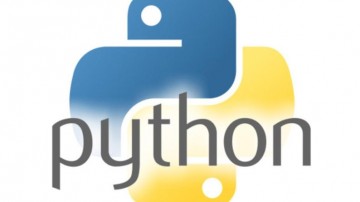import torch
import torch.nn as nn
import torch.nn.functional as F
import torch.optim as optim
import jieba
from collections import Counter
from sympy.polys.domains.finitefield import flint
'''
file_out= open("战皇.txt","w",encoding="utf-8")
with open("38156.txt",'r',encoding="GB18030") as file:
for line in file:
line = line.strip()
file_out.write(line+'\n')
file_out.close()
print("转换完成")
'''
'''
stop_words=[]
with open('stopwords.txt','r',encoding='utf-8') as file:
for line in file:
line = line.strip()
stop_words.append(line)
file.close()
out_file=open('战皇_cut.txt','w',encoding='utf-8')
with open("38156.txt","r",encoding="utf-8") as file:
for line in file:
line=line.strip()
words_list=jieba.cut(line,cut_all=False)
out_srt=""
for word in words_list:
if word not in stop_words and word != '\t':
out_srt+=word
out_srt+=" "
out_file.write(out_srt.rstrip()+'\n')
file.close()
print("停用词整理完毕")
'''
total_word_list=[]
with open('战皇_cut.txt','r',encoding='utf-8')as file:
for line in file:
words=line.split()
total_word_list+=words
print(len(total_word_list))
word_counter=Counter(total_word_list)
most_freq_word=word_counter.most_common(200)
word_list=[]
for word,freq in most_freq_word:
word_list.append(word)
print('已筛选出出现频率前200的词语')
word_list.append('')
word_to_idx={word:idx for idx,word in enumerate(word_list)}
idx_to_word={idx:word for idx,word in enumerate(word_list)}
print("词典表构建完成")
'''
# 定义一个句子列表,后面会用这些句子来训练 CBOW 和 Skip-Gram 模型
sentences = ["Kage is Teacher", "Mazong is Boss", "Niuzong is Boss",
"Xiaobing is Student", "Xiaoxue is Student",]
# 将所有句子连接在一起,然后用空格分隔成多个单词
words = ' '.join(sentences).split()
# 构建词汇表,去除重复的词
word_list = list(set(words))
# 创建一个字典,将每个词映射到一个唯一的索引
word_to_idx = {word: idx for idx, word in enumerate(word_list)}
# 创建一个字典,将每个索引映射到对应的词
idx_to_word = {idx: word for idx, word in enumerate(word_list)}
voc_size = len(word_list) # 计算词汇表的大小
print(" 词汇表:", word_list) # 输出词汇表
print(" 词汇到索引的字典:", word_to_idx) # 输出词汇到索引的字典
print(" 索引到词汇的字典:", idx_to_word) # 输出索引到词汇的字典
print(" 词汇表大小:", voc_size) # 输出词汇表大小
# 生成 CBOW 训练数据
def create_cbow_dataset(sentences, window_size=2):
data = []# 初始化数据
for sentence in sentences:
sentence = sentence.split() # 将句子分割成单词列表
for idx, word in enumerate(sentence): # 遍历单词及其索引
# 获取上下文词汇,将当前单词前后各 window_size 个单词作为周围词
context_words = sentence[max(idx - window_size, 0):idx] \
+ sentence[idx + 1:min(idx + window_size + 1, len(sentence))]
# 将当前单词与上下文词汇作为一组训练数据
data.append((word, context_words))
return data
# 使用函数创建 CBOW 训练数据
cbow_data = create_cbow_dataset(sentences)
# 打印未编码的 CBOW 数据样例(前三个)
print("CBOW 数据样例(未编码):", cbow_data[:3])
# 定义 One-Hot 编码函数
import torch # 导入 torch 库
def one_hot_encoding(word, word_to_idx):
tensor = torch.zeros(len(word_to_idx)) # 创建一个长度与词汇表相同的全 0 张量
tensor[word_to_idx[word]] = 1 # 将对应词的索引设为 1
return tensor # 返回生成的 One-Hot 向量
# 展示 One-Hot 编码前后的数据
word_example = "Teacher"
print("One-Hot 编码前的单词:", word_example)
print("One-Hot 编码后的向量:", one_hot_encoding(word_example, word_to_idx))
# 定义 CBOW 模型
import torch.nn as nn # 导入 neural network
class CBOW(nn.Module):
def __init__(self, voc_size, embedding_size):
super().__init__()
# 从词汇表大小到嵌入大小的线性层(权重矩阵)
self.input_to_hidden = nn.Linear(voc_size,
embedding_size, bias=False)
# 从嵌入大小到词汇表大小的线性层(权重矩阵)
self.hidden_to_output = nn.Linear(embedding_size,
voc_size, bias=False)
def forward(self, X): # X: [num_context_words, voc_size]
# 生成嵌入:[num_context_words, embedding_size]
embeddings = self.input_to_hidden(X)
# 计算隐藏层,求嵌入的均值:[embedding_size]
hidden_layer = torch.mean(embeddings, dim=0)
# 生成输出层:[1, voc_size]
output_layer = self.hidden_to_output(hidden_layer.unsqueeze(0))
return output_layer
embedding_size = 2 # 设定嵌入层的大小,这里选择 2 是为了方便展示
cbow_model = CBOW(voc_size,embedding_size) # 实例化 CBOW 模型
print("CBOW 模型:", cbow_model)
# 训练 cbow 类
learning_rate = 0.001 # 设置学习速率
epochs = 1000 # 设置训练轮次
criterion = nn.CrossEntropyLoss() # 定义交叉熵损失函数
import torch.optim as optim # 导入随机梯度下降优化器
optimizer = optim.SGD(cbow_model.parameters(), lr=learning_rate)
# 开始训练循环
loss_values = [] # 用于存储每轮的平均损失值
for epoch in range(epochs):
loss_sum = 0 # 初始化损失值
for target, context_words in cbow_data:
# 将上下文词转换为 One-Hot 向量并堆叠
X = torch.stack([one_hot_encoding(word, word_to_idx) for word in context_words]).float()
# 将目标词转换为索引值
y_true = torch.tensor([word_to_idx[target]], dtype=torch.long)
y_pred = cbow_model(X) # 计算预测值
loss = criterion(y_pred, y_true) # 计算损失
loss_sum += loss.item() # 累积损失
optimizer.zero_grad() # 清空梯度
loss.backward() # 反向传播
optimizer.step() # 更新参数
if (epoch+1) % 100 == 0: # 输出每 100 轮的损失,并记录损失
print(f"Epoch: {epoch+1}, Loss: {loss_sum/len(cbow_data)}")
loss_values.append(loss_sum / len(cbow_data))
# 绘制训练损失曲线
import matplotlib.pyplot as plt # 导入 matplotlib
# 绘制二维词向量图
plt.rcParams["font.family"]=['SimHei'] # 用来设定字体样式
plt.rcParams['font.sans-serif']=['SimHei'] # 用来设定无衬线字体样式
plt.rcParams['axes.unicode_minus']=False # 用来正常显示负号
plt.plot(range(1, epochs//100 + 1), loss_values) # 绘图
plt.title(' 训练损失曲线 ') # 图题
plt.xlabel(' 轮次 ') # X 轴 Label
plt.ylabel(' 损失 ') # Y 轴 Label
plt.show() # 显示图
# 输出 cbow 习得的词嵌入
print("CBOW 词嵌入:")
for word, idx in word_to_idx.items(): # 输出每个词的嵌入向量
print(f"{word}: {cbow_model.input_to_hidden.weight[:,idx].detach().numpy()}")
fig, ax = plt.subplots()
for word, idx in word_to_idx.items():
# 获取每个单词的嵌入向量
vec = cbow_model.input_to_hidden.weight[:,idx].detach().numpy()
ax.scatter(vec[0], vec[1]) # 在图中绘制嵌入向量的点
ax.annotate(word, (vec[0], vec[1]), fontsize=12) # 点旁添加单词标签
plt.title(' 二维词嵌入 ') # 图题
plt.xlabel(' 向量维度 1') # X 轴 Label
plt.ylabel(' 向量维度 2') # Y 轴 Label
plt.show() # 显示图
'''
